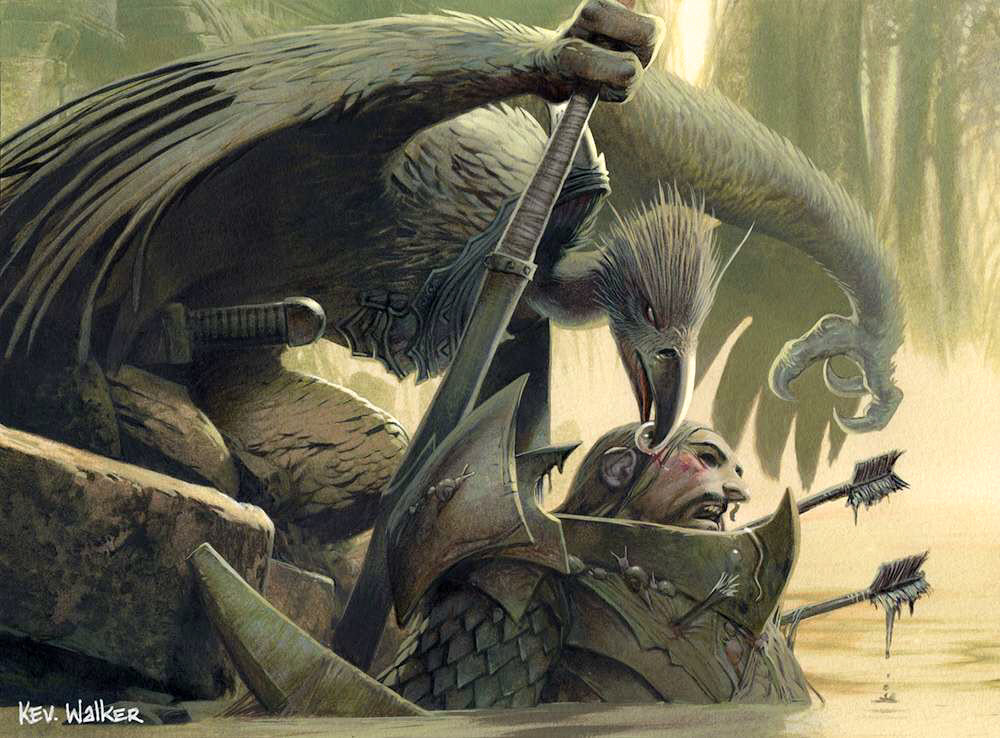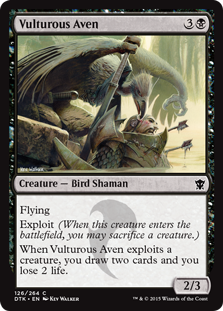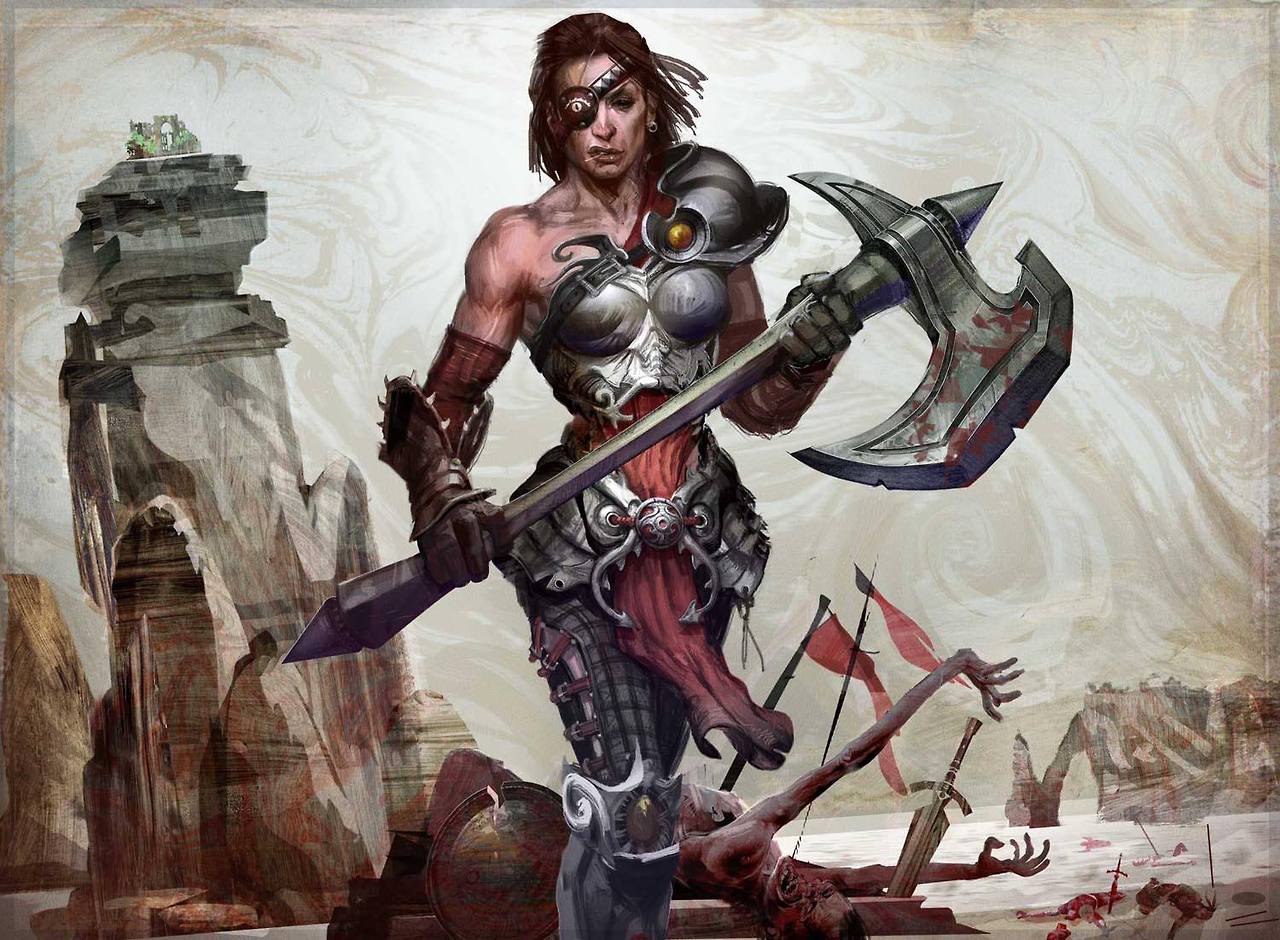Today I want to tell you about Karuba, a tile laying board game by Rüdiger Dorn and published by Haba. In this game, you lead four brave explorers as they explore the jungles of Karuba, leading them to hidden temples and collecting treasure along the way. This game is currently nominated for the Spiel des Jahres award, one of the most prestigious awards that a board game can receive.
Each player starts with an identical game board, which is a grid of five by six rectangles that represent the land of Karuba. At the start, you take turns placing each of four explorers and four temples such that each player has an identical setup on his or her board. Then, on each turn, one player randomly draws from a collection of 36 path tiles, and each player places that tile wherever they would like on their board. The object is to create contiguous paths to connect each explorer to the same colored temple. When a tile is drawn, you may instead elect to move one of your explorers a certain number of spaces and not place the tile. Certain tiles reward treasure when you land on them, which are worth points at the end of the game. Once an explorer reaches a temple, you also receive points based on how many others players have already reached that temple.
The brilliance of this game is that everyone has an identical board and identical goals, and each receive their paths in the exact same order. So while there certainly is an element of luck in the game, the game rewards those who make the best choices with their early tiles. At any time you can look and see which tiles haven't been drawn yet, and since there are lots of duplicates, you always have a decent idea what your odds are of drawing a needed direction. You also have to take care in moving your explorers, as they can't move past one another, so you have to make sure that you're not blocking yourself in.
The game is simple enough to teach to kids, but complex enough to be enjoyable for most strategy-oriented adults. It typically takes 30 minutes or so to play a game, so your investment time is also pretty small.
The components are well made and clearly marked, and the theme is communicated well in the images and pieces. They aren't anything special, but they certainly get the job done.
I certainly enjoyed playing Karuba with my gaming group the several times we've played it, and I look forward to playing it again soon.
Tuesday, May 31, 2016
Thursday, May 26, 2016
Stardew Valley
Pop quiz - get out your #2 pencil! What indie game has topped Steam's sales charts since its release back in February, ranking up with blockbuster titles like Fallout 4 and Far Cry? If you answered Stardew Valley, then you are correct.
After years of beta releases and updates, this game was finally released by its sole developer Eric Barone, and has gone on to sell well over a million copies. Since its release, Barone has continued to periodically update the game with new content, and as of this post is diligently working on even more great content for version 1.1. So what is Stardew Valley?
Stardew Valley, at its heart, is a farming simulation game in the vein of the long-running Harvest Moon series of video games. As the game opens, your character has just resigned from his soul-sucking job at the Joja Corporation and accepted ownership of a small farm inherited from his or her grandfather in the backwater village of Stardew Valley. The farm is rundown and barren, and the best days of the village seem long lost, but if all goes well, you have the opportunity to not only create a thriving agricultural business but also revitalize this community and restore hope to its inhabitants.
Opportunities abound right from the start. From the proceeds of the handful of parsnip seeds you start the game with, you can invest in more lucrative crops, raise livestock, become an avid fisherman, mine deep beneath the ground for ores and minerals, defeat monsters that dwell in the depths, nurture orchards, and even dabble in weaving, smelting, brewing, canning, and cooking. And in your spare time, you can also develop relationships with the many varied citizens of Stardew Valley as well as pursue romantic relationships, marriage, and even start a family.
Want to learn more? Check out the game's official wiki, or just search YouTube for dozens of Let's Play series on the game. Honestly, right now it seems like just about everyone is playing this game. So why is it so popular?
After years of beta releases and updates, this game was finally released by its sole developer Eric Barone, and has gone on to sell well over a million copies. Since its release, Barone has continued to periodically update the game with new content, and as of this post is diligently working on even more great content for version 1.1. So what is Stardew Valley?
Stardew Valley, at its heart, is a farming simulation game in the vein of the long-running Harvest Moon series of video games. As the game opens, your character has just resigned from his soul-sucking job at the Joja Corporation and accepted ownership of a small farm inherited from his or her grandfather in the backwater village of Stardew Valley. The farm is rundown and barren, and the best days of the village seem long lost, but if all goes well, you have the opportunity to not only create a thriving agricultural business but also revitalize this community and restore hope to its inhabitants.
Opportunities abound right from the start. From the proceeds of the handful of parsnip seeds you start the game with, you can invest in more lucrative crops, raise livestock, become an avid fisherman, mine deep beneath the ground for ores and minerals, defeat monsters that dwell in the depths, nurture orchards, and even dabble in weaving, smelting, brewing, canning, and cooking. And in your spare time, you can also develop relationships with the many varied citizens of Stardew Valley as well as pursue romantic relationships, marriage, and even start a family.
Want to learn more? Check out the game's official wiki, or just search YouTube for dozens of Let's Play series on the game. Honestly, right now it seems like just about everyone is playing this game. So why is it so popular?
- Independent, retro games are big right now. A big part of this game's charm is its old-school pixel graphics and sounds.
- It's open-ended, with tons of different paths to success. You can play the game how you want, focusing on what you enjoy and ignoring what you don't. Your character is likewise fully customizable, letting you choose gender, hair style, physical features, and clothing.
- The characters bring the world to life. There are 42 distinct characters in the game, each with their own personality, their own likes and dislikes and their own families and relationships, and each of them has something to share with you. Of these, ten of them are available to marry (5 for each gender, although the game doesn't restrict your romance choices by sex).
- There are a ton of Easter Eggs and secrets in the game. In fact, Barone has stated that despite the extensive wiki, there are still several things that no one has discovered yet.
- The developer is responsive to the community and continues to add free content. When players feel like they can interact directly with the game developer and continue to receive free updates as time goes on, it's only natural to feel more invested in the game.
Tuesday, May 24, 2016
BG Control in MPDC 33.05
If you've been paying attention at all to the recent Standard Pauper events, you should be aware that one deck is consistently running the field against all comers. This week, it captured four of the eight Top 4 spots between the two tournaments, taking 1st place in both events. And to cap it all off, AfroDwarf earned his trophy without losing a single match; in fact, he only lost 2 games between the five rounds he played. I'm of course talking about BG Control. Let's take a look at AfroDwarf's list:
Like many decks in the format right now, this is taking advantage of the very strong Lifegain and Graveyard recursion strategies tied to Pulse of Murasa, which also happens to synergize quite well with the sacrifice-enabled card draw and pump from Vulturous Aven and Nantuko Husk respectively. Elvish Visionary, Dutiful Attendant, Sanitarium Skeleton, and even Byway Courier in a pinch are excellent sacrifice targets, essentially allowing you to recoup the card lost in the exchange. It also plays 10 different removal spells, with two copies of Dead Weight to bring in from the Sideboard as well. Quilled Wolf and Ruin Processor are great end-game cards, and even Nantuko Husk can function in that same role as a finisher. And with Duress to deal with opposing spells, Caustic Caterpillar to deal with Artifacts and Enchantments, Mire's Malice for additional card advantage, and Watcher in the Web to shore up defenses, the deck has plenty of strong options in the Sideboard.
I haven't played much with or against this deck, so I'd love to hear from you about your experiences with this deck. What are the keys to the matchup? Which archetypes have the best chance of beating it? What changes, if any, would you make to this list? Let me know in the comments below.
| Creatures 4 Elvish Visionary 4 Vulturous Aven 3 Byway Courier 3 Quilled Wolf 2 Dutiful Attendant 2 Nantuko Husk 2 Ruin Processor 2 Sanitarium Skeleton 22 cards Other Spells 4 Complete Disregard 4 Oblivion Strike 4 Pulse of Murasa 2 Grasp of Darkness 14 cards |
Lands 10 Forest 8 Swamp 4 Evolving Wilds 2 Mortuary Mire 24 cards
Sideboard
4 Duress 3 Watcher in the Web 2 Mire's Malice 2 Caustic Caterpillar 2 Dead Weight 1 Gravepurge 1 Ruin Processor 15 cards |
Like many decks in the format right now, this is taking advantage of the very strong Lifegain and Graveyard recursion strategies tied to Pulse of Murasa, which also happens to synergize quite well with the sacrifice-enabled card draw and pump from Vulturous Aven and Nantuko Husk respectively. Elvish Visionary, Dutiful Attendant, Sanitarium Skeleton, and even Byway Courier in a pinch are excellent sacrifice targets, essentially allowing you to recoup the card lost in the exchange. It also plays 10 different removal spells, with two copies of Dead Weight to bring in from the Sideboard as well. Quilled Wolf and Ruin Processor are great end-game cards, and even Nantuko Husk can function in that same role as a finisher. And with Duress to deal with opposing spells, Caustic Caterpillar to deal with Artifacts and Enchantments, Mire's Malice for additional card advantage, and Watcher in the Web to shore up defenses, the deck has plenty of strong options in the Sideboard.
I haven't played much with or against this deck, so I'd love to hear from you about your experiences with this deck. What are the keys to the matchup? Which archetypes have the best chance of beating it? What changes, if any, would you make to this list? Let me know in the comments below.
Thursday, May 19, 2016
Borderland Marauder and Standard Legality
For the past couple seasons of our Standard Pauper tournaments, we've been experimenting with allowing cards previously printed at Common but reprinted in Standard at higher difficulties as Standard Pauper legal. You can read some of my previous thoughts about that issue here, but basically it comes down to the fact that the official Wizards' databases indicate those cards are legal for both Standard and Pauper.
Recently, a similar issue has arisen with Borderland Marauder, which was a key card in Adner's Red Eye Vampire deck, which captured the trophy for SPDC 33.03. Although this card was not reprinted in Magic Origins or any of the other major expansions that are Standard legal, it was printed in the Welcome Deck 2016, which is a small demo set Wizards of the Coast distributes to game stores. All of these cards are technically Standard legal, and will remain so until Shadows Over Innistrad rotates out of Standard.
This demo set includes three other Commons that are also Standard legal despite not being in any of the marquee expansions: Marked By Honor, Oakenform, and Walking Corpse.
Regardless of your opinion on whether these should be legal or not, the issue is pretty clear: they are Standard legal Commons, and are listed as such in all official card databases. As such, they are legal for play in our Standard Pauper tournaments.
While this may be confusing, Adner's story is a perfect example of why these need to be legal:
I agree this is a bit confusing for brewers indeed, especially when back from a long period away from the game and format. This was the case I faced when brewing this RDW. I just used the STD filter available on MTGO then chose common rarity, and the Borderland Marauders just showed up ! So I gave them a ride. How decisive were they really? Not very much. Reprints, symbols, different rarities, man I can now understand why I am bald tearing off all hairs when it gets so complicated.
So now you know.
Recently, a similar issue has arisen with Borderland Marauder, which was a key card in Adner's Red Eye Vampire deck, which captured the trophy for SPDC 33.03. Although this card was not reprinted in Magic Origins or any of the other major expansions that are Standard legal, it was printed in the Welcome Deck 2016, which is a small demo set Wizards of the Coast distributes to game stores. All of these cards are technically Standard legal, and will remain so until Shadows Over Innistrad rotates out of Standard.
This demo set includes three other Commons that are also Standard legal despite not being in any of the marquee expansions: Marked By Honor, Oakenform, and Walking Corpse.
Regardless of your opinion on whether these should be legal or not, the issue is pretty clear: they are Standard legal Commons, and are listed as such in all official card databases. As such, they are legal for play in our Standard Pauper tournaments.
While this may be confusing, Adner's story is a perfect example of why these need to be legal:
I agree this is a bit confusing for brewers indeed, especially when back from a long period away from the game and format. This was the case I faced when brewing this RDW. I just used the STD filter available on MTGO then chose common rarity, and the Borderland Marauders just showed up ! So I gave them a ride. How decisive were they really? Not very much. Reprints, symbols, different rarities, man I can now understand why I am bald tearing off all hairs when it gets so complicated.
So now you know.
Tuesday, May 17, 2016
GenCon 2016 Preregistration
This past weekend preregistration opened for GenCon, which is the largest gaming convention in the world, and is held right here in my own state of Indiana. Although the event itself isn't until the first week of August, tickets for the huge variety of special events and seminars were finally available this past Sunday. And while there's a ton to see and do without having to participate in any of these events, in past years these have definitely been some of the highlights of my experience at this convention.
My wife and I will be spending a great deal of time at the Writer's Symposium, which is nearly a convention within the convention. It is a professional symposium for writers of speculative fiction. This year's Guest of Honor is none other than Robin Hobb, author of the Realms of Elderlings series of books, which are definitely among my favorite fantasy series. Any panel she is speaking on, I plan on attending.
Other events that I signed up for include playtesting Howard Taylor's new Planet Mercenary RPG, participating in the D&D 5th edition Adventure Leagues games, attending the Writing Excuses podcast recording, and getting a chance to play the newly released Tyrants of the Underdark board game.
If you're reading this and are planning on attending GenCon, I'd enjoy the chance to say hello. Let me know in the comments below. I can't wait for August!
My wife and I will be spending a great deal of time at the Writer's Symposium, which is nearly a convention within the convention. It is a professional symposium for writers of speculative fiction. This year's Guest of Honor is none other than Robin Hobb, author of the Realms of Elderlings series of books, which are definitely among my favorite fantasy series. Any panel she is speaking on, I plan on attending.
Other events that I signed up for include playtesting Howard Taylor's new Planet Mercenary RPG, participating in the D&D 5th edition Adventure Leagues games, attending the Writing Excuses podcast recording, and getting a chance to play the newly released Tyrants of the Underdark board game.
If you're reading this and are planning on attending GenCon, I'd enjoy the chance to say hello. Let me know in the comments below. I can't wait for August!
Thursday, May 12, 2016
New Content for Standard Pauper
Today I wanted to share with you two new pieces of content for Standard Pauper. The first comes from Chris Baker, who maintains an infrequently updated blog called The Draft Brewery. He recently posted his full set review video for Shadows Over Innistrad as well as a brief post highlighting his top picks from the set.
The second comes from Adner, who maintains the blog for the Standard Pauper Players Clan on Magic Online. After a prolonged absence following the loss of the Standard Pauper filter, a new post is now available discussing his first place finish in SPDC 33.03 with a Mono Red Vampires list.
Be sure and check both of these out for some great Standard Pauper content. And if you're aware of other content for the format, be sure and let me know in the comments below so I can highlight it in future posts.
And as a bonus, let me also highlight the fact that Chris Baker has also been posting his matches from the Ravnica Unified League on his YouTube channel, so if that might be of interest to you, be sure and check that out as well. See you next time.
The second comes from Adner, who maintains the blog for the Standard Pauper Players Clan on Magic Online. After a prolonged absence following the loss of the Standard Pauper filter, a new post is now available discussing his first place finish in SPDC 33.03 with a Mono Red Vampires list.
Be sure and check both of these out for some great Standard Pauper content. And if you're aware of other content for the format, be sure and let me know in the comments below so I can highlight it in future posts.
And as a bonus, let me also highlight the fact that Chris Baker has also been posting his matches from the Ravnica Unified League on his YouTube channel, so if that might be of interest to you, be sure and check that out as well. See you next time.
Tuesday, May 10, 2016
May Means Tornadoes
 |
| This youth, home alone, survived the total loss of his home by going to the inner most part of the house, putting as many walls as possible between himself and the storm. |
As is also typical for this time of year, there were hundreds of storm chasers that descended upon the area, and they captured some amazing footage. If you want to witness what it's like to view a major tornado up-close and personal, you'll want to check out the videos on this page. Below is one of the best I've ever seen, demonstrating just how violent and destructive these storms can be.
Here are some important things to keep in mind when it comes to surviving tornadoes:
- Keep informed. If you live in an area where tornadoes have struck in the past, make sure you have reliable access to weather information. Severe weather outbreaks are now predicted several days in advance. Keep an eye on the weather, pay attention to media outlets, and make sure you have multiple ways to receive any warnings that are issued for your area. Weather radios and weather apps are both valuable technological resources - use them.
- Know when and where to take shelter. The vast majority of tornadoes are survivable, even if you're directly in the path, by taking appropriate shelter. Go into the lowest level of a building, find an interior room without windows, get low to the ground, and protect your head. Of course, the absolute best place to be is underground - either in a basement, a cellar, or tornado shelter.
- Avoid vehicles, highway underpasses, mobile homes, or warehouses. Most of the time, you'd be better off outside on the ground than in one of these. In particular, people often think they can escape a tornado by car. Unfortunately, the ensuing traffic jams often end up trapping you right in the path of the storm, with no shelter available. Most of the time, you're better off staying put.
- Take warnings seriously. In the age of the cellphone, too many people decide to run outside and take video of a tornado instead of taking shelter. Heed the warnings, protect yourself and your loved ones, and don't do anything stupid.
Thursday, May 5, 2016
Offworld Trading Company (Release Version)
Exactly a year ago today, I posted about picking up Offworld Trading Company on Steam Early Access. Late last week, the game had its official release. So it seemed only reasonable for me to jump back into the game, see what had changed, and offer my thoughts on whether it's worth purchasing.
For those of you unfamiliar with it, Offworld Trading Company is a game designed by Soren Johnson, lead developer of the massively popular Civilization IV. It puts you in command of a near-future corporation operating on Mars to mine the valuable commodities found there, buy and trade them on the open market, and export them offworld, all for the purpose of buying out your competitors and earning the exclusive rights to the planet. While clearly a real time strategy game, what makes Offworld stand out is that you use money, and not armies, to conquer new territory, expand your holdings, and defeat your competitors. It isn't a game where your success is tied to how fast you can press hotkeys or micromanage your units; instead, the game is all about recognizing the best opportunities while reacting to a market that responds to what's going on in the game, but often not in a totally predictable manner.
While I played quite a bit of the game after I initially purchased it, I admit I hadn't played it in probably six months prior to its release. Here's what impressed me about the final version:
1. It received a ton of graphical polish. Gone are the placeholder art assets and bad digitized voice-overs. The graphical interface was clearer, each colony type had new artwork and story concepts, and overall simply looked much better.
2. It has an amazing soundtrack. Grammy award winning composer Christopher Tin created a fantastic atmospheric soundtrack for the game, and it was released as DLC (and given out free to anyone who participated in Early Access). You can listen to it here.
3. It comes with a bunch of great extras. These include a lengthy design document and strategy guide, the latter of which was actually compiled from the best players who spent all of Early Access streaming the game and participating in ten different tournaments, all hosted by the game's developer.
4. It has a variety of play options that support both single player and multiplayer experiences. There's a short but detailed tutorial-style series of missions, a much longer single-player campaign that changes each time you play it, daily skirmish challenges that lets you view how everyone else did compared to you, and of course a variety of gameplay mods and maps for online play.
Offworld Trading Company has received very positive reviews, and for good reason. It's well worth picking up. I certainly intend to play it quite a bit in the coming weeks.
For those of you unfamiliar with it, Offworld Trading Company is a game designed by Soren Johnson, lead developer of the massively popular Civilization IV. It puts you in command of a near-future corporation operating on Mars to mine the valuable commodities found there, buy and trade them on the open market, and export them offworld, all for the purpose of buying out your competitors and earning the exclusive rights to the planet. While clearly a real time strategy game, what makes Offworld stand out is that you use money, and not armies, to conquer new territory, expand your holdings, and defeat your competitors. It isn't a game where your success is tied to how fast you can press hotkeys or micromanage your units; instead, the game is all about recognizing the best opportunities while reacting to a market that responds to what's going on in the game, but often not in a totally predictable manner.
While I played quite a bit of the game after I initially purchased it, I admit I hadn't played it in probably six months prior to its release. Here's what impressed me about the final version:
1. It received a ton of graphical polish. Gone are the placeholder art assets and bad digitized voice-overs. The graphical interface was clearer, each colony type had new artwork and story concepts, and overall simply looked much better.
2. It has an amazing soundtrack. Grammy award winning composer Christopher Tin created a fantastic atmospheric soundtrack for the game, and it was released as DLC (and given out free to anyone who participated in Early Access). You can listen to it here.
3. It comes with a bunch of great extras. These include a lengthy design document and strategy guide, the latter of which was actually compiled from the best players who spent all of Early Access streaming the game and participating in ten different tournaments, all hosted by the game's developer.
4. It has a variety of play options that support both single player and multiplayer experiences. There's a short but detailed tutorial-style series of missions, a much longer single-player campaign that changes each time you play it, daily skirmish challenges that lets you view how everyone else did compared to you, and of course a variety of gameplay mods and maps for online play.
Offworld Trading Company has received very positive reviews, and for good reason. It's well worth picking up. I certainly intend to play it quite a bit in the coming weeks.
Tuesday, May 3, 2016
Dimir Puzzle
While we're only four events into the new Standard Pauper metagame, already one deck has emerged as the top contender. Even more surprising, it draws its name from Pieces of the Puzzle, a card that I evaluated as being worse than Divination and as such marginal at best. But with some skillful piloting by Forli, this deck has finished first in one event and second in two of the other three events. I don't think it's exaggerating to say that, at least right now, this is the deck to beat in the format. So let's take a quick peek at the decklist and briefly look at what makes it so good.
So why has this deck been so successful?
| Creatures 4 Undead Servant 4 cards Other Spells 4 Clutch of Currents 4 Ojutai's Summons 4 Pieces of the Puzzle 4 Reave Soul 3 Anticipate 3 Complete Disregard 3 Grasp of Darkness 3 Oblivion Strike 2 Calculated Dismissal 2 Shamble Back 1 Mystic Meditation 1 Read the Bones 34 cards |
Lands 9 Island 9 Swamp 4 Evolving Wilds 22 cards
Sideboard
3 Dead Weight 2 Ruin Processor 2 Shamble Back 2 Negate 2 Duress 2 Dispel 1 Complete Disregard 1 Mire's Malice 15 cards |
So why has this deck been so successful?
- It sidesteps removal. By playing so few creatures, and gaining card advantage with the ones it does play, it renders a lot of playable cards almost irrelevant.
- It's setup to play Control quite well. The deck has a balanced suite of both removal spells and card draw, giving it time to gain a sizable advantage over its opponent in the course of a game.
- It has permission spells to deal with any weaknesses. While the deck only includes 5 counters plus 4 in the Sideboard, this gives it game against anything an opponent can throw at it.
- It's going to the win the long game. All the above factors make this deck a favorite in most matchups to win the longer the game goes on.
Subscribe to:
Posts (Atom)









